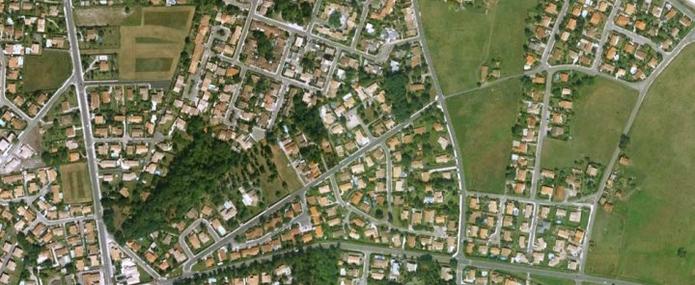A Mediapart article of Tuesday June 27 pointed out the real estate profits public actors involved in the Gonesse Triangle development project will realize from selling farmland to the Auchan Group for up to 500 times the price paid to expropriate landowners and farmers. Beyond this questionable profit making, there is also the issue of opposition from farmers and people living near the development area.
This issue concerns a land use and development project of a mostly commercial nature now associated with the “Greater Paris” initiative in an area coveted for its proximity to the airports located north of Paris. Containing farmland among the closest to the city center, the area includes highly fertile land used primarily for grain production.
One of the leading causes of biodiversity loss worldwide is land use change inducing loss of agricultural or natural lands. A second cause is simplification in ecosystems and landscapes stemming from agricultural intensification. The Île-de-France region is the most artificialized region in France, and the process continues, albeit at a slower pace than in the last decade. In a recent article (Issue Brief No. 01/2007, For a Biodiversity-Oriented Approach of Land Use Change Inducing Loss of Agricultural or Natural Lands: The Case of the Île-de-France Region), we discussed how land-use change is the outcome of gains and losses for each type of land use and how commercial development and changes to farmland are involved in this process.
What does such a project mean for biodiversity?
At first glance, the project may seem positive: the 3D models of development plans for the Gonesse Triangle show bodies of water and large lawns with trees alongside commercial and office buildings. Comparing these models to images of the area’s geometrically shaped wheat fields that use pesticides and fertilizers and are purported to be threatened by development, one might wonder whether the final outcome would necessarily turn out negative for the planet as well as for nature. Wouldn’t replacing the highly simplified ecosystems associated to conventionally farmed crops with varied, neo-urban spaces equipped with trees, lawns, and bodies of water be a gain for biological diversity, including, for example, populations of insects, birds, and soil-based organisms, to name a few?
Although this question merits an in-depth study we have not yet conducted, most likely, the answer is “no,” for three main reasons.
- The loss of fertile farmland must be viewed in light of growing demand for food and agricultural production. To meet this demand, new productive land will have to be found. This will require converting more land from one crop to another, which will lead to loss of pastureland and forests somewhere in the world. In addition, should this newly converted land prove less fertile, it will require—even—larger quantities of fertilizer and pesticides.
- Growth in zones dedicated to commercial and economic activity must be assessed in terms of local growth potential, especially consumption by households within the catchment area as well as of demand for surface area for such activity. If the supply of such land increases faster than demand, this results in reduced business activity for other stores or offices. Thus in contexts other than Île-de-France, some associate the proliferation of zones of economic and commercial activity with the desertion of downtown areas and bemoan both urban sprawl and simplified landscapes, whose detrimental effects on biodiversity hardly need repeating.
- From a biodiversity perspective, the reversible nature of land use is key. Equally important—if not more so—is the possibility that practices—or the way in which space is used—may improve in the future. Both of these perspectives suggest that a wheat field is in principle more valuable than a commercial area. On the one hand, agricultural spaces in the Île-de-France region turn out to be more reversible than urban spaces and are more often converted into natural spaces than others.
On the other hand, it is easier to convert a wheat farm to an organic operation or to add hedges and uncultivated spaces nearby than to replace hectares of parking lots—even empty ones—with pastureland. Besides, the simplification of ecosystems associated with intensive farming, much as it may be regretted, should not mask the ecological poverty of the manicured lawns and decorative trees seen in spaces bordering zones dedicated to economic and commercial activity. Developers would improve their own track record if they devised development plans and management rules based on respect for the richness of ecosystems, including varietal selection, green parking lots, permanent grasslands, bodies of water with depth variability and graduated shorelines, and so on. For their part, those opposed to this land use project advocate converting large-scale farmland to localized and organic farming, which would mean changing agricultural practices without removing any land from the productive area.
An assessment of this development project from the perspective of biodiversity must therefore do more than focus on the degree of species loss and biodiversity offsetting measures. Rather, it must also assess their impact on urban landscapes, changes in agricultural production, and the way in which these spaces are managed, today and in the future.
© Photo – Urban outgrowth of a mid-sized French city. Google Map from Norwich


